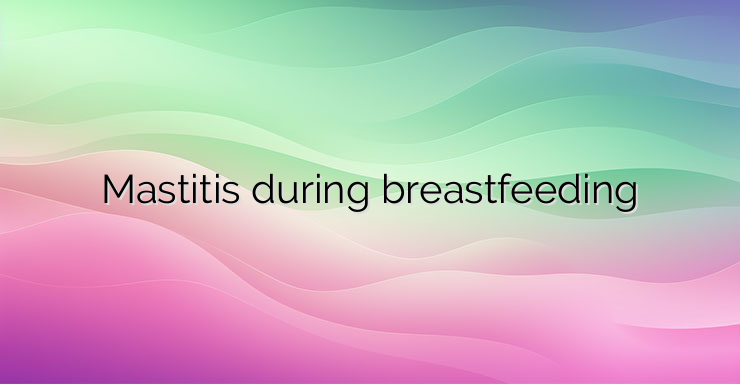Mastitis occurs in approximately 10 percent of women who breastfeed. It may cause you to stop breastfeeding. The risk of mastitis can be reduced by frequent, complete breast emptying and by optimizing breastfeeding technique. Continued breastfeeding should be encouraged in the presence of mastitis and usually poses no risk to the infant. Breast abscess is the most common complication of mastitis. It can be prevented by early treatment of mastitis and continued breastfeeding. Once an abscess occurs, surgical drainage or needle aspiration is required. Mastitis is defined as inflammation of the breast. Although it can occur spontaneously or during breastfeeding. Mastitis is defined clinically as localized, painful inflammation of the breast occurring in association with flu-like symptoms (eg, fever, malaise). Mastitis is particularly problematic because it can lead to cessation of breastfeeding, which provides optimal nutrition for the baby. Sore nipples can be an early indicator of a condition that may predispose some patients to mastitis. In the early weeks of breastfeeding, sore nipples are most often caused by poor latching on the part of the infant. Latching can best be assessed by someone experienced in breastfeeding who observes feeding. Wearing plastic-lined bras can cause nipple irritation from trapped moisture. Dry and cracked nipples can cause pain and can serve as a gateway for bacteria that cause mastitis. Clogged milk ducts can also lead to mastitis during breastfeeding. This condition manifests as localized breast tenderness due to inadequate removal of milk from one duct. There is a hard, red, tender area on the affected breast, and there may be a painful, white blister about 1 mm in size on the nipple. This blister is thought to be an epithelial overgrowth or an accumulation of particles or fatty material. Removal of the blister with a sterile needle or by rubbing with a cloth may be helpful. Other treatment methods that help in these cases include frequent breastfeeding and the use of warm compresses or showers. Massaging the affected area towards the nipple is often helpful. Avoiding tight and uncomfortable underwear is highly recommended. A yeast infection can increase the risk of mastitis by causing nipple cracks or milk stasis. This condition is often associated with other fungal infections, such as oral thrush or diaper rash. Treatment of both mother and baby is essential. Topical agents that are often effective include nystatin for the baby or mother, or miconazole or ketoconazole for the mother. Abnormalities in the baby’s mouth (for example, cleft lip or palate) can lead to teat trauma and increase the risk of mastitis.Babies with a short frenulum may not be able to express milk effectively from the breast, leading to trauma to the nipple. A frenotomy can reduce trauma to the nipple and is usually a simple, bloodless procedure that can be performed without anesthesia. The incision is made through the translucent tissue under the tongue, avoiding any blood vessels or tissue that may contain nerves or muscles. One of the most common complications of mastitis is the cessation of breastfeeding. Mothers should be assured of the many benefits of breastfeeding and persevere in its continuation. Another potential complication is the development of an abscess, which presents similarly to mastitis, except that there is a firm area in the breast, often with fluctuation. An abscess can be confirmed with ultrasound and should be treated with surgical drainage or needle aspiration, which may require a repeat procedure. References: 1. Centers for Disease Control and Prevention. Healthy People 2010 objectives for the nation. http://www.cdc.gov/breastfeeding/policies/policy-hp2010.htm. 2. https://www.aafp.org/pubs/afp/issues/2008/0915/p727.html


Leave a Reply